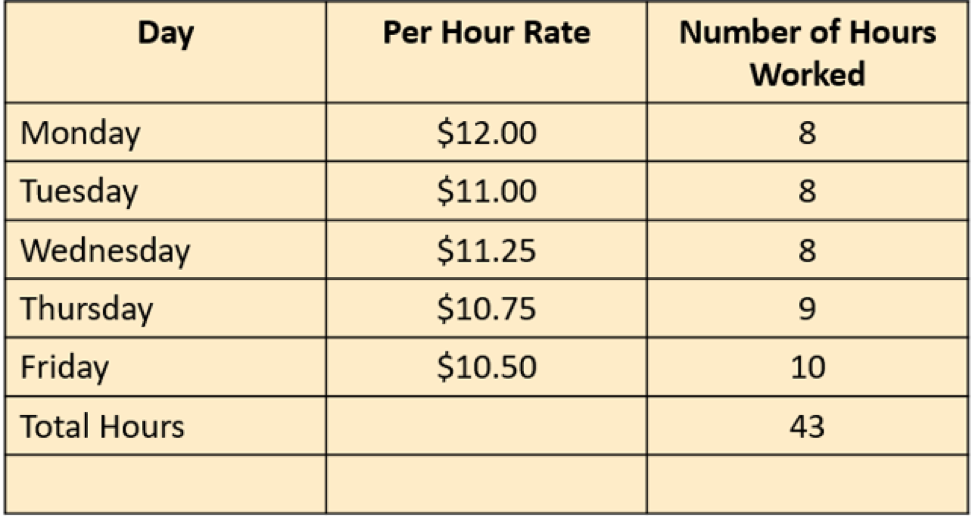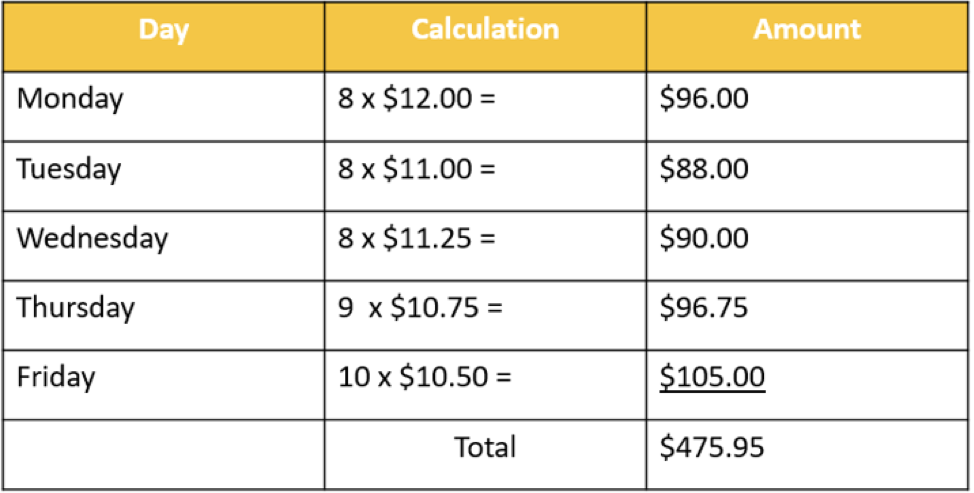Average vs Weighted Average When It Comes to Calculating Overtime Rates—Another Use for Al

Calculating overtime is always tricky. What rate is the “regular rate of pay” as required by the Fair Labor Standards Act (FLSA) is a question that must be answered each time for each calculation. What can make this even more difficult is when the employee works at more than one rate in the workweek. What rate do you use for the “regular rate of pay” if the employee has two or more hourly rates during the workweek? Can you simply average the different rates or is something more required? The Department of Labor recently addressed this situation in Opinion Letter FLSA 2018-28, dated December 21, 2018.
 Facts of the letter: The employer in question wanted to determine if their compensation plan, which pays an average hourly rate that may vary from workweek to workweek, complies with the FLSA. It was concerned in both the area of minimum wage and calculating the overtime rate. The employer pays a different rate for when an employee is working with a client as opposed to when the employee is traveling between clients. It makes sure that the typical standard rate of pay is $10.00 per hour and if the employee works over 40 hours in any given workweek, they are paid overtime based on the $10.00 rate.
Facts of the letter: The employer in question wanted to determine if their compensation plan, which pays an average hourly rate that may vary from workweek to workweek, complies with the FLSA. It was concerned in both the area of minimum wage and calculating the overtime rate. The employer pays a different rate for when an employee is working with a client as opposed to when the employee is traveling between clients. It makes sure that the typical standard rate of pay is $10.00 per hour and if the employee works over 40 hours in any given workweek, they are paid overtime based on the $10.00 rate.
The DOL agreed that the employer followed the minimum wage requirement as the employer is paying well above the minimum wage of $7.25 per hour. However, the problem for the employer is with the rate used to calculate overtime. According to the letter:
…If the employer always assumes a regular rate of pay of $10 per hour when calculating overtime due, then the employer will not pay all overtime due to employees whose actual regular rate of pay exceeds $10 per hour. 29 C.F.R. § 778.107. Neither an employer nor an employee may arbitrarily choose the regular rate of pay; it is an “actual fact” based on “mathematical computation.” Walling v. Youngerman-Reynolds Hardwood Co., Inc., 325 U.S. 419, 424–25 (1945); 29 C.F.R. § 778.108. That said, the compensation plan does comply with the FLSA’s overtime requirements for all employees whose actual regular rates of pay are less than $10 per hour, as an employer may choose to pay an overtime premium in excess of the statutorily required amount.
So what rate should an employer use to calculate the overtime in situations where the employee is working two or more rates within the workweek? The rate is determined by what is known as a “weighted average” not an average of the rates. The DOL addresses this method in Fact Sheet #23: Overtime Pay Requirements of the FLSA. It reads as follows:
 …Where an employee in a single workweek works at two or more different types of work for which different straight-time rates have been established, the regular rate for that week is the weighted average of such rates. That is, the earnings from all such rates are added together and this total is then divided by the total number of hours worked at all jobs. In addition, section 7(g)(2) of the FLSA allows, under specified conditions, the computation of overtime pay based on one and one-half times the hourly rate in effect when the overtime work is performed. The requirements for computing overtime pay pursuant to section 7(g)(2) are prescribed in 29 CFR 778.415 through 778.421.
…Where an employee in a single workweek works at two or more different types of work for which different straight-time rates have been established, the regular rate for that week is the weighted average of such rates. That is, the earnings from all such rates are added together and this total is then divided by the total number of hours worked at all jobs. In addition, section 7(g)(2) of the FLSA allows, under specified conditions, the computation of overtime pay based on one and one-half times the hourly rate in effect when the overtime work is performed. The requirements for computing overtime pay pursuant to section 7(g)(2) are prescribed in 29 CFR 778.415 through 778.421.
Here is an example of a weighted average calculation: The employee has worked the following hours at the following rates for the workweek:
 Step 1: To determine the weighted average the following calculations would be required:
Step 1: To determine the weighted average the following calculations would be required:

Step 2: Divide the total earnings by the total hours worked to determine the regular rate of pay
$475.75 divided by 43 = $11.06 (regular rate of pay)
Step 3: Determine the premium pay for overtime by multiplying the regular rate of pay by .5 (or divide by 2) then multiplying that amount by the number of overtime hours
$11.06 x .5 x 3 = $16.59
Step 4: Determine the total weekly compensation by adding the total earnings (step 1) and the premium pay (step 3): $475.75 + $16.59 = $492.34. $492.34 is the total weekly compensation.
In closing, it must be remembered that it is the employer’s responsibility to ensure that the regular rate of pay used for overtime calculations is the correct one.
Learn much, much more in Vicki’s courses on Illumeo.
******
Vicki M. Lambert, CPP, has more than 35 years of hands-on experience in all facets of payroll, including wage and hour law and tax compliance and is a prolific author, trainer and lecturer.



Leave A Comment